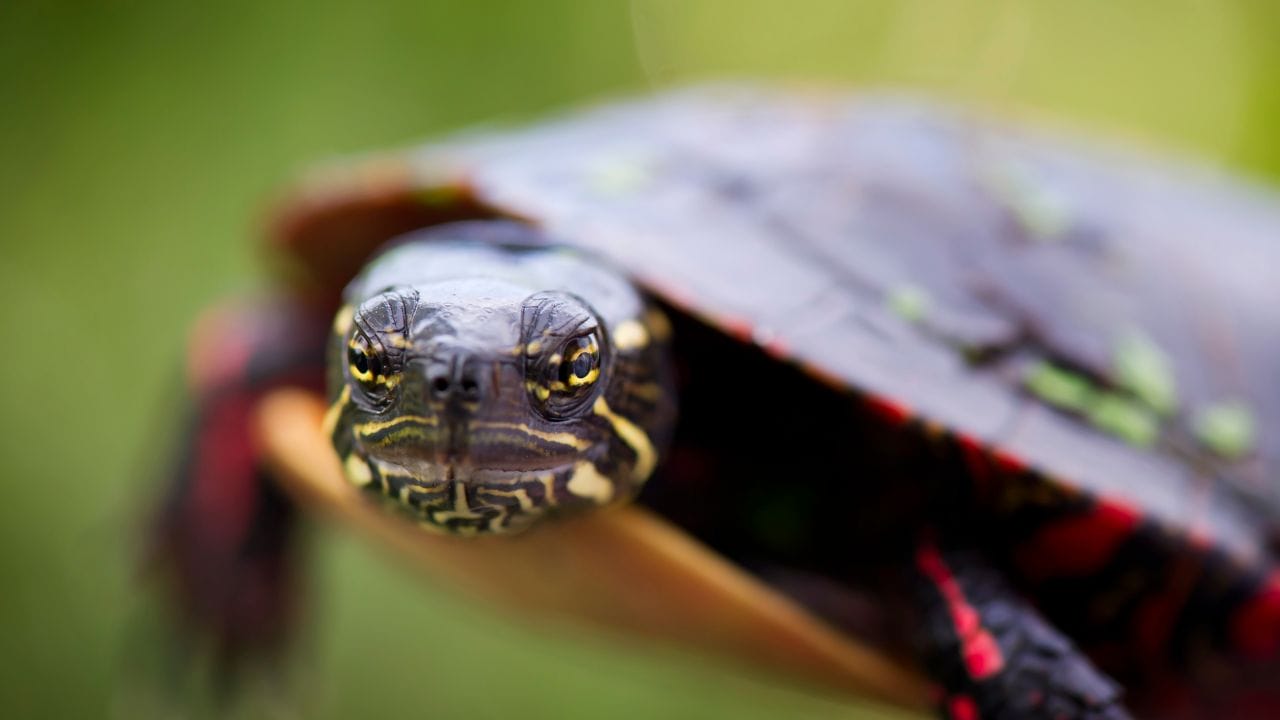Turtle Suddenly Not Moving? Sick, Sleeping, or Dead?

This post was created with help from AI tools and carefully reviewed by a human (Muntaseer Rahman). For more on how we use AI on this site, check out our Editorial Policy.
Your turtle’s not moving, not blinking, not doing a thing. That’s enough to make any keeper panic.
The truth is, an unresponsive turtle only points to three things—sickness, hibernation, or death. No sugarcoating.
Before you jump to the worst-case, you’ve got to run a few quick checks. This post will show you how to tell what’s really going on and what to do about it.

How To Test If Your Turtle Is Alive
Turtles are naturally lazy, so you need to be sure it’s not just a chill day. Start with the basics:
- Leg or tail pinch – give a gentle squeeze. A live turtle will twitch or pull back.
- Eye tap – lightly touch near the eyelid. Most turtles will blink or flinch.
- Breathing check – hold a feather, mirror, or even a thin piece of tissue near the nose. Any sign of breath means it’s alive.
If your turtle reacts to any of these, it’s alive but possibly sick, stressed, or preparing for hibernation. No reaction at all? That’s when you need to start considering the worst.
Don’t confuse an unresponsive turtle with one that’s just sleeping in an odd position like vertically in the water—sleeping turtles will react to touch tests.
If The Turtle Is Sick
When turtles get sick, the first sign is usually laziness. They stop swimming, stop basking, and spend most of the time looking half-dead.
Watch for clues:
- Puffy or swollen eyes → Vitamin A problems.
- Slimy, soft shell or black pits → shell rot.
- Bubbles from the nose, wheezing, or watery eyes → respiratory infection.
If you see any of these, don’t waste time guessing. A vet visit is the only real fix. Most illnesses won’t go away on their own, and the longer you wait, the worse it gets.
Respiratory issues are especially serious and can lead to drowning if the turtle can’t surface properly for air.

This Hilarious Turtle Book Might Know Your Pet Better Than You Do
Let’s be real—most turtle care guides feel like reading a textbook written by a sleep-deprived zookeeper.
This one’s not that.
Told from the snarky point of view of a grumpy, judgmental turtle, 21 Turtle Truths You’ll Never Read in a Care Guide is packed with sarcasm, sass, and surprisingly useful insights.
And hey—you don’t have to commit to the whole thing just yet.
Grab 2 free truths from the ebook and get a taste of what your turtle really thinks about your setup, your food choices, and that weird plastic palm tree.
It’s funny, it’s honest, and if you’ve ever owned a turtle who glares at you like you’re the problem—you’ll feel seen.
If The Turtle Is Hibernating
Cold tanks make slow turtles. If the water drops too low, their body slows down and they slip into hibernation.
Not every species does this, though. Box turtles and some sliders will, but many common pet turtles shouldn’t be left to brumate indoors.
Check your temps first. Water should sit around 70–80°F, basking spot closer to 90–100°F. If it’s colder, your turtle might just be knocked out by the chill. Warm things back up and see if they perk up.
If you do want to let a hibernation happen, it has to be done safely—clean health, stable temps, and a proper setup. Otherwise, it’s a gamble with your turtle’s life.
If The Turtle Has Died
No reaction, no breathing, nothing at all—yeah, that’s probably death.
If your turtle was found at the bottom of the tank and you suspect it may have drowned due to being trapped or unable to surface, that’s a specific emergency requiring immediate CPR attempts.
A few clear signs make it obvious:
- The body is stiff or completely limp.
- A foul smell starts coming off it.
- Eyes are sunken or hollow.
- The shell feels lighter, and the body may bloat or float.
- Bugs or mites show up fast.
If you’re still unsure, a vet can confirm. But don’t sit on it for days—decomposition gets messy quick.
For the goodbye part, keep it simple and safe:
- Bury in your yard or a pet cemetery.
- Ask about pet cremation if you want ashes.
- Some keep the shell as a memory, but that’s something only an expert should prepare.
Whatever you choose, act soon. Waiting only makes it harder.

About Author
Muntaseer Rahman started keeping pet turtles back in 2013. He also owns the largest Turtle & Tortoise Facebook community in Bangladesh. These days he is mostly active on Facebook.











